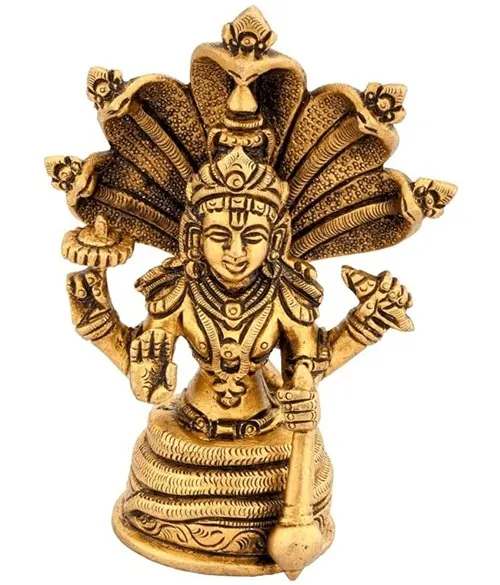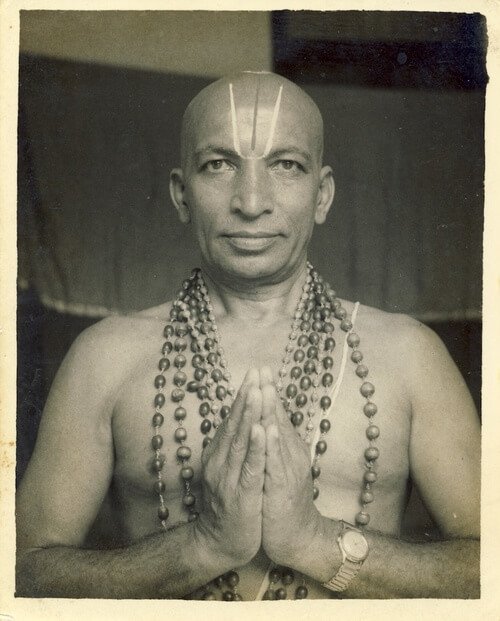
OPENING MANTRA
Guru Dhyanam
The Guru Dhyanam Mantra (Contemplation of the Gurus) serves several purposes:
- Define the intentions for the practice, aligning personal goals with the spiritual purpose of Yoga
- Honour the Lineage of present and past Teachers through whom the practice has come to us expressing gratitude and reverence towards the gurus who have imparted their wisdom guiding practitioners towards self-realisation and inner peace
- Inspire a sense of Concentration and Dedication helping to establish a sacred space and prepare the mind and body for the practice of Yoga
Il Mantra Guru Dhyanam rende omaggio in particolare al Saggio Patanjali, venerato per i suoi contributi allo Yoga, alla grammatica sanscrita e alla medicina ayurvedica
The Guru Dhyanam Mantra pays homage in particular to the Sage Patanjali, revered for his contributions to Yoga Sanskrit grammar and Ayurvedic medicine
Guru Dhyanam in Devanagari
ॐ
वन्दे गुरूणां चरणारविन्दे सन्दर्शितस्वात्मसुखाव बोधे ।
निःश्रेयसे जङ्गलिकायमाने संसारहालाहल मोहशान्त्यै ॥
Transliteration
Oṁ
vande gurūṇāṁ caraṇāravinde sandarśita svātma sukhāva bodhe |
niḥ-śreyase jaṅgali-kāyamāne saṁsāra hālāhala mohaśāṁtyai ||
Translation
Om, I bow to the lotus feet of the Gurus who reveal the bliss of the true Self through their knowledge. I
(To them) who have made the desert of worldly existence, filled with the poison of illusion, a place of peace and liberation. II
Devanagari (second verse)
आबाहु पुरुषाकारं शङ्खचक्रासिधारिणम् ।
सहस्रशिरसं श्वेतं प्रणमामि पतञ्जलिम् ॥
ॐ
Transliteration
ābāhu puruṣākāraṁ śaṁkhacakrāsi dhāriṇam |
sahasra śirasaṁ śvetaṁ praṇamāmi patañjalim ||
Oṁ
Translation
I bow down to Patanjali, who has the form of a man with extended arms, holding a conch, a discus, and a sword, who has a thousand heads and is white (pure). Om.
CLOSING MANTRA
Mangala Mantra | Mangala Mudra
At the end of the practice, the Mangala Mantra (Prayer for Prosperity) expresses gratitude and a wish for the well-being and peace of all beings. It symbolises the completion of the session and the intention to extend the positive effects of the practice into the world beyond the yoga mat.
Mangala means auspiciousness or blessing, and the mantra invokes goodwill, harmony, and prosperity.
Originating from the Rig Veda, a revered Hindu text, the Mangala Mantra transcends its historical context to play a vital role in modern Yoga. Reciting it at the end of an Ashtanga session is more than a tradition; it is a mindful act, a moment to reflect and seal the energy cultivated during the practice. It aims to radiate positive intentions and bring the benefits of the practice into daily life, embracing the spiritual aspiration that lies at the heart of Yoga.

Mangala Mantra in Devanagari
ॐ
स्वस्तिप्रजाभ्यः परिपालयन्तां न्यायेन मार्गेण महीं महीशाः।
गोब्राह्मणेभ्यः शुभमस्तु नित्यं लोकाः समस्ताः सुखिनो भवन्तु ॥
ॐ शान्तिः शान्तिः शान्तिः
Transliteration
Oṁ
svastiprajābhyaḥ paripālayantāṃ nyāyena mārgeṇa mahīṃ mahīśāḥ |
gobrāhmaṇebhyaḥ śubhamastu nityaṃ lokāḥ samastāḥ sukhino bhavantu ||
Oṁ śāntiḥ śāntiḥ śāntiḥ
Translation
Om.
May the great rulers of the world protect the earth and its people with justice and fairness, by following the right path.
May there be auspiciousness for the cows and Brahmins always.
May all the worlds and people be happy.
Om. Peace, peace, peace.
